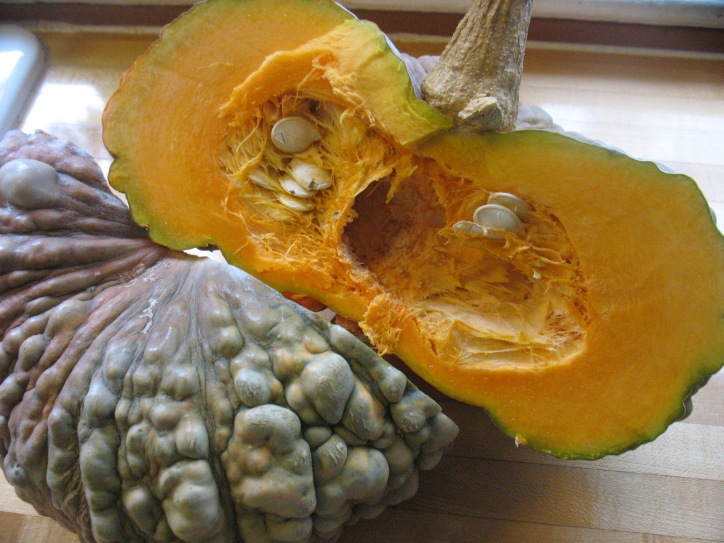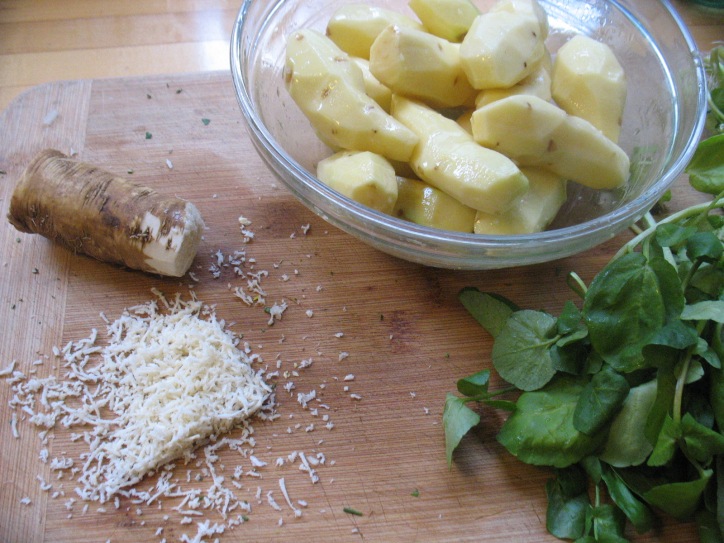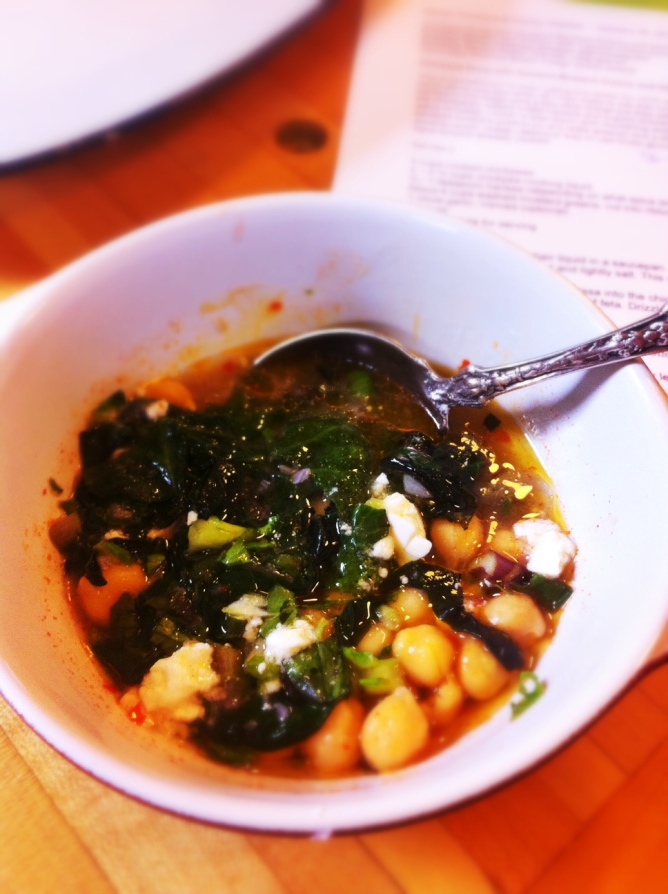Winter Squash, Chickpeas, Lemongrass & Coconut Milk
I’m not at all tired of the months of sun and warmth captured in a deep orange winter squash enjoyed in the last throes of winter. A friend gave me a gorgeous Marina di Chioggia squash last fall and we’ve been enjoying it all week in a variety of forms. It started with gingery squash muffins baked with a big dollop of apricot jam on top and it has continued with this warming but bright Indian-flavored dish.
This dish is only slightly adapted from the inimitable Nigel Slater who in the headnote describes ground turmeric as having a “dusty, old as time itself” taste which is such an apt description for this spice. The lemon grass and ginger balance the turmeric in a dish that is both light and fresh and creamy and deeply satisfying. I had it for breakfast this morning, without rice and with lots of lime juice. I have tended towards savory breakfasts for the past year and this may have been the best one yet!
Happy Cooking!
P.S. There are sill spots available in the Winter/Spring Cooking Class at Luscher Farm on March 16th. We’d love to have you!

Chickpeas, squash, lemon grass and coconut milk–a pretty winning combination when slowly cooked with cardamom and turmeric.
Chickpeas with Winter Squash, Lemongrass & Coconut Milk
–slightly adapted from Tender by Nigel Slater
If you don’t have whole cardamom pods you can use 1/4 teaspoon ground cardamom and add it when you add the ground coriander and turmeric. Whole green cardamom pods are a good thing to have in your spice drawer since they stay fresher much longer than the pre-ground spices.
1 1/2 cups dried chickpeas soaked for six or more hours, drained
2 medium-sized onions, finely chopped
2 tablespoons peanut, coconut or olive oil
4 cloves of garlic, peeled and chopped
Thumb-sized piece of ginger, peeled
3 large stalks of lemongrass, root end trimmed and several tough outer layers removed, roughly chopped
2 teaspoons ground coriander
1 1/2 teaspoons ground turmeric
6 green cardamom pods, crushed (or ground cardamom–see headnote)
2 Serrano chilies, finely chopped and seeds removed (or keep seeds if you want it spicier)
1 lb peeled and seeded winter squash (about 4 1/2 cups of bite-sized pieces)
1 1/2 cups vegetable stock or chickpea cooking liquid seasoned with 2 teaspoons of homemade veggie bouillon base
1 1/2 cups coconut milk (full fat if at all possible)
1 tablespoon brown or yellow mustard seeds
1 cup chopped cilantro
To serve
Cooked basmati rice
Lime wedges
Drain the chickpeas and bring them to the boil in deep, unsalted water. Let them simmer for 40 to 50 minutes till tender.
Pour the oil into a deep pot and add the onions, letting them cook over a moderate heat till soft and translucent. Meanwhile make a rough paste of the garlic ginger and lemongrass in a food processor. The lemongrass won’t break down all the way and will still seem very fibrous but process for quite a while. The fibers will soften in the stew and practically disappear. Stir the paste into the softened onion and continue to cook. Add the ground coriander and turmeric, then add the crushed cardamom pods.
Add them, together with the fresh chillies, seeded and finely chopped. Keep the heat fairly low and don’t allow to brown (though nothing dreadful will happen if you do).
Add the squash to the pan, along with cooked chickpeas and the stock or chickpea cooking liquid. Bring to the boil, then turn down to a simmer and continue to cook at a gentle simmer till the squash is tender, about 25 minutes. Stop as soon as the flesh is yielding to the point of a knife – you don’t want it to collapse.
Stir in the coconut milk and continue to simmer. Put a splash of oil into a pan and add the mustard seeds. As soon as they start to pop add them to the pot, together with the chopped cilantro. Serve with the rice and the limes wedges.







